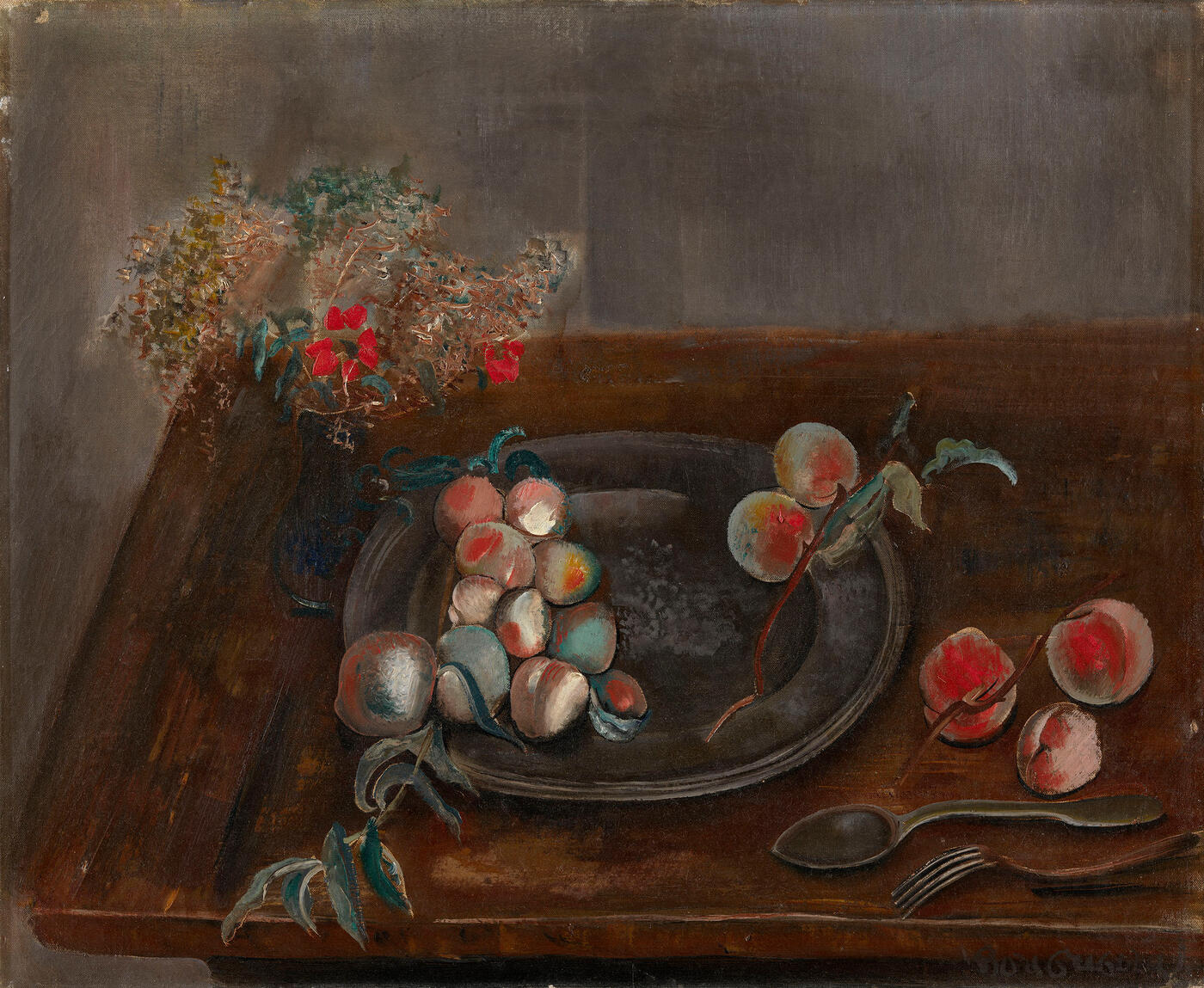MacDougall's Russian Art Auctions 27-30 May 2012
27 May 2012

* 107. GRIGORIEV, BORIS (1886-1939)
Still Life with Fruit and Flowers on a Table, signed.
Oil on canvas, 49.5 by 61 cm.
150,000–200,000 GBP
Painted in the late 1920s.
Provenance: Acquired by the great-grandparents of the present owner.
Private collection, USA.
Still life as a genre figured prominently in Boris Grigoriev’s painting during the second half of the 1920s when he, in his own words, started his movement “into the realm of pure painting”, rejecting the demands of subject matter and narrative. This turning point in the artist’s creative work coincided with his move in 1927 to the Côte d‘Azur, where he immersed himself in
the picturesque atmosphere of the South. Boris and his wife Ella bought a villa (“Borisella”, named after the couple) in the little town of Cagnes-sur-Mer, where in time many Parisian artists were to base themselves. The villa, which was built on the foundations of a mediaeval castle, became a real refuge for Grigoriev from the turmoil and din of the big city. In the 1930s he spent practically all his time here, avoiding travelling to Paris. The picturesque corners of the surrounding gardens became the objects of his unbroken artistic observation and interest, and his specially equipped studio – a unique testing ground.
From this we can deduce that it was here that the present still life was painted. The wooden table that figures in this work and a number of other compositions exactly matches the original which stood in Grigoriev’s studio. A photograph has survived that shows both the table in the studio and Still Life with a Bottle of Wine on an easel, in which objects are arranged on that very table (see T.A. Galeeva, Boris Dmitrievich Grigoriev, St Petersburg, 2007, p. 210, fig. 182).
The ascetic style of this canvas reflects the artist’s quest in the late 1920s: his pursuit of a self-sufficient painting aesthetic and focus on the traditions of the classic still life. These qualities became more pronounced in the artist’s painting after his trip to
Chile, where he became closely acquainted with the colonial art of Latin America, which was founded both on ancient primitive Indian art and on the classical art of Spain.
The palette of the work is dominated by severe browns whose monotony is enlivened by the occasional blotches of red flowers
and fruit, and green foliage. Both irony and expressiveness are present in the apparently simple composition which is typical of Grigoriev’s aesthetic approach to his paintings.
The well-known Russian émigré art critic Nikolai Misheyev wrote: “Grigoriev’s latest works are already pure art: art for its
own sake. Paintings which speak for themselves, in which there is neither ‘Raseya’ nor ‘Russia’, no psychology or philosophy, and no subject matter, only the celebration which is Apollonian in origin, freed from any connection with Dionysus”. (Perezvony, 1929. No. 42. p. 1326).
Meanwhile, the grotesque distortions of the fork and spoon, the whimsical lines of the greenery, and the contrast between the shining metal of the dish, the transparent glass of the vase and the firmness of the fruit form the idiosyncratic thread of the pictorial narrative.
Grigoriev showed the numerous still lifes which he painted at the end of the 1920s at a solo exhibition at the Colette Weil gallery in Paris in May 1930, the first after his return from South America. The artist’s fish, flowers and fruit drew a delighted response from the reviewer Lolly Lvov. As he wrote in the newspaper Russia and Slavdom: “Resolving a painting task, seeking out a painterly solution to the problem of form, overcoming the captivity of line in which he had formerly been held and
now being captivated by colour, embracing the formula ‘from colour to light’ with which he is presently so enamoured – this is the Boris Grigoriev we see today” (Paris, 10 May, 1930).
This still life is a unique example of the new trends that were emerging in Boris Grigoriev’s painting at the end of the 1920s.
Dr Tamara Galeeva
Notes on symbols:
* Indicates 5% Import Duty Charge applies.
Ω Indicates 20% Import Duty Charge applies.
§ Indicates Artist's Resale Right applies.
† Indicates Standard VAT scheme applies, and the rate of 20% VAT will be charged on both hammer price and premium.